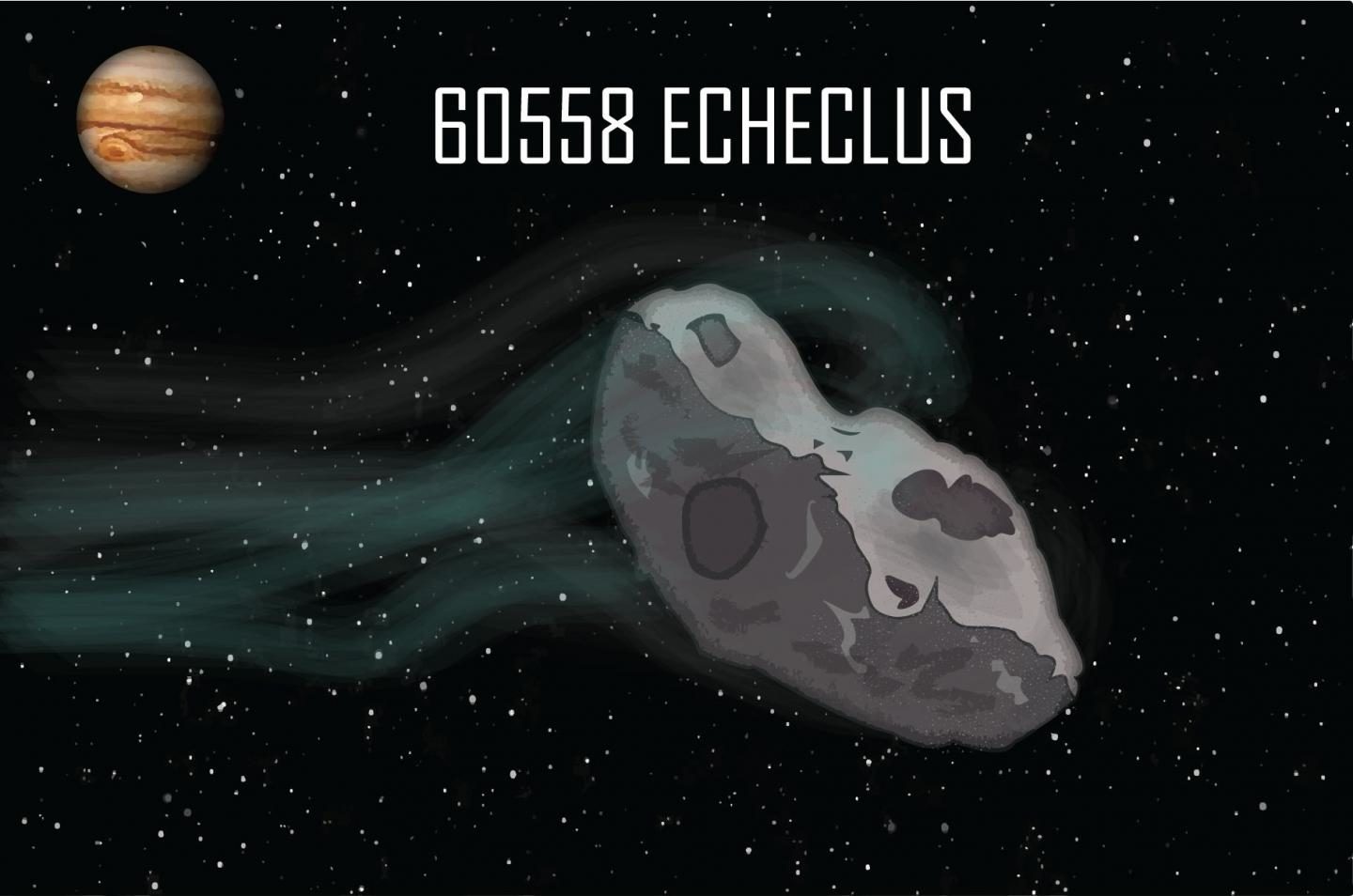
© Florida Space Institute at UCFllustration of Echeclus.
Scientists pursue research through observation, experimentation and modeling. They strive for all of these pieces to fit together, but sometimes finding the unexpected is even more exciting. That's what happened to University of Central Florida's astrophysicist Gal Sarid, who studies comets, asteroids and planetary formation and earlier this year was part of a team that published a
study focused on the comet 174P/Echeclus.
It didn't behave the way the team was expecting."This is another clue that Echeclus is a bizarre solar system object," said University of South Florida physics research Professor Maria Womack, who leads the team.
Comets streak across the sky and as they get closer to the sun look like bright fuzz balls with extended luminous trails in their wake. However, comets are actually bulky spheres of mixed ice and rock, many of them also rich in other frozen volatile compounds, such as carbon monoxide, carbon dioxide, hydrogen cyanide and methanol.
Comets heat up as they get closer to the sun, losing their icy layers by sublimation and producing emission jets of water vapor, other gases and dust expelled from the comet nucleus, Sarid said. Once they move away from the sun, they cool off again. But some comets start showing emission activity while still very far from the sun, where heating is low.
Comment: The previous day in Perth, Western Australia, stargazers were left baffled after a 'red fireball' was spotted.